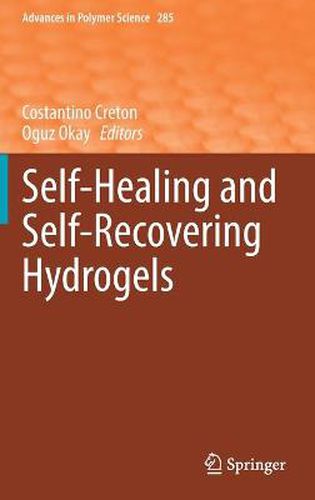Readings Newsletter
Become a Readings Member to make your shopping experience even easier.
Sign in or sign up for free!
You’re not far away from qualifying for FREE standard shipping within Australia
You’ve qualified for FREE standard shipping within Australia
The cart is loading…






This title is printed to order. This book may have been self-published. If so, we cannot guarantee the quality of the content. In the main most books will have gone through the editing process however some may not. We therefore suggest that you be aware of this before ordering this book. If in doubt check either the author or publisher’s details as we are unable to accept any returns unless they are faulty. Please contact us if you have any questions.
This volume covers experimental and theoretical advances on the relationship between composition, structure and macroscopic mechanical properties of novel hydrogels containing dynamic bonds. The chapters of this volume focus on the control of the mechanical properties of several recently discovered gels with the design of monomer composition, chain architecture, type of crosslinking or internal structure. The gels discussed in the different chapters have in common the capability to dissipate energy upon deformation, a desired property for mechanical toughness, while retaining the ability to recover the properties of the virgin material over time or to self-heal when put back in contact after fracture. Some chapters focus on the synthesis and structural aspects while others focus on properties or modelling at the continuum or mesoscopic scale. The volume will be of interest to chemists and material scientists by providing guidelines and general structure-property considerations to synthesize and develop innovative gels tuned for applications. In addition it will provide physicists with a better understanding of the role of weak interactions between molecules and physical crosslinking on macroscopic dissipative properties and self-healing or self-recovering properties.
$9.00 standard shipping within Australia
FREE standard shipping within Australia for orders over $100.00
Express & International shipping calculated at checkout
This title is printed to order. This book may have been self-published. If so, we cannot guarantee the quality of the content. In the main most books will have gone through the editing process however some may not. We therefore suggest that you be aware of this before ordering this book. If in doubt check either the author or publisher’s details as we are unable to accept any returns unless they are faulty. Please contact us if you have any questions.
This volume covers experimental and theoretical advances on the relationship between composition, structure and macroscopic mechanical properties of novel hydrogels containing dynamic bonds. The chapters of this volume focus on the control of the mechanical properties of several recently discovered gels with the design of monomer composition, chain architecture, type of crosslinking or internal structure. The gels discussed in the different chapters have in common the capability to dissipate energy upon deformation, a desired property for mechanical toughness, while retaining the ability to recover the properties of the virgin material over time or to self-heal when put back in contact after fracture. Some chapters focus on the synthesis and structural aspects while others focus on properties or modelling at the continuum or mesoscopic scale. The volume will be of interest to chemists and material scientists by providing guidelines and general structure-property considerations to synthesize and develop innovative gels tuned for applications. In addition it will provide physicists with a better understanding of the role of weak interactions between molecules and physical crosslinking on macroscopic dissipative properties and self-healing or self-recovering properties.